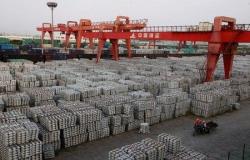Cocoa and chocolate will be in the spotlight during the World Cocoa Conference which is organized from April 21 to 24 in Brussels by the ICCO (International Cocoa Organization) in collaboration with the FPS Foreign Affairs. The biggest event in the sector. This conference will indeed bring together actors in the cocoa value chain from around the world (cocoa farmers, cooperatives, exporters, traders, governments, international aid and development agencies, etc.) to exchange their points of view and identify solutions for the sustainability of the sector. The theme is in fact: “Pay more for sustainable cocoa”. An appointment that Choprabisco, the sectoral federation of companies which produce and/or market chocolate, pralines, biscuits and confectionery in Belgium, could not miss. It brings together 170 members whose turnover represents approximately 90% of the entire sector. Interview with its president, Philippe de Selliers, against a backdrop of soaring cocoa prices.
The price of a tonne of cocoa reached $10,702 on Monday on the futures market in New York. A new record. And an unprecedented crisis?
Indeed, it is an unprecedented crisis. We have never reached this price level in history. For around ten years, the price of cocoa has been relatively stable, between 3 and 4 times cheaper than what it is today. Prices really started to rise 18 months ago, with an explosion over the last 6 months. The main reason: a poor main harvest (between October 2023 and March 2024) due to unfavorable weather conditions in Ivory Coast and Ghana which, between them, represent 60% of world production. According to ICCO forecasts, the harvest would be down by 20% in Ivory Coast and 12% in Ghana. Now follows the intermediate harvest which seems better since, according to global forecasts, from October 2023 to September 2024, the total harvest would be 11% lower than that of the previous year.
gull“The increase in income of small producers remains very low compared to that of the price of cocoa. Most of this 3- or 4-fold increase in the price of cocoa goes into the pockets of intermediaries.”
Added to this smaller harvest is speculation…
There is huge speculation because this price growth is obviously unreasonable. Without forgetting in this context a structural element: the demand for chocolate continues to increase by around 2% per year worldwide. Ultimately, more cocoa will be needed.
Will this price increase continue?
I don’t have a crystal ball. There is a significant speculative bubble but I cannot imagine that prices will remain this high. The weather conditions were exceptional. The market will rebalance a little. To what extent, at what level, I don’t know.
Chocolate makers’ strategies to adapt to the explosion in cocoa prices
How does this increase impact the different players in the chain?
The increase in income of small producers, and this is the problem, remains very low compared to that of the price of cocoa. Most of this 3- or 4-fold increase in the price of cocoa goes into the pockets of intermediaries (including speculators) and not to the people who produce it. Nor to industrialists. We are experiencing this situation.
Are we going to see bankruptcies and company mergers? An increase in prices for the consumer?
It’s a little early to draw conclusions. Bankruptcies? Not now. Companies – the majority are SMEs – will react according to their stock level, their financial capacity to withstand the shock and their pricing and product strategy. In Belgium, we are not going to change the recipes that make our reputation for quality. Some companies will increase their prices a little. But the good news is that chocolate is a pleasure product and very affordable. It will be necessary to see to what extent a price increase will reduce consumer demand. I think we can raise prices a little without losing any consumers.
You are also Leonidas’ boss. Are you going to increase your prices?
No. Not for several months in any case because we want to see the level at which the price will stabilize. With the war in Ukraine, there has been an astronomical growth in the prices of energy and raw materials. We waited and only raised prices a few months later when energy prices had fallen again. And the consumer paid it forward: our higher costs were offset by higher sales volume. We take the risk again.
The price of cocoa is skyrocketing: what impact on your shopping?
What do you expect from this Brussels Conference?
We hope that there will be a joint declaration at the end of the conference to give a new dynamic. And we, as Belgian chocolate, must show the way.
“We have no choice, Belgian chocolate must lead by example”
Where are we in the Belgian chocolate sector in terms of sustainability, which is at the heart of the Brussels Conference? What are the challenges?
You should know that each year, more than 300,000 tonnes of cocoa beans are imported into Belgium, more than 70% of which come from Ivory Coast and Ghana. Today, an average cocoa farmer in West Africa earns less than half of the living income (living income) necessary for a family to meet its needs and invest in its cocoa farm… The Berlin Declaration of the previous World Conference, which took place there in 2018, made this living income a priority… Also in 2018, Alexander De Croo, then Minister of Development Cooperation, encouraged the sector to place sustainability at the heart of its concerns, alongside the excellent quality of Belgian chocolate. The Beyond Chocolate initiative was born, the first in Europe to include in its charter the ambition of a vital income for cocoa farmers. Within Beyond Chocolate (of which Philippe de Selliers has been the chairman of the steering committee since 2019, Editor’s note)chocolate companies and chocolatiers commit with other stakeholders (NGOs, supermarkets, certification bodies, universities, etc.) to making all chocolate produced and sold in Belgium sustainable.
With what quantified objectives?
The goal: that all chocolate produced and/or sold in Belgium is, by 2025, 100% certified sustainable (Fairtrade, Rain Forest Alliance, etc.) or compliant with a corporate sustainability program (such as those of Barry Callebaut , Cargill or Belcolade-Puratos). These certification bodies and programs focus on three of the pillars of sustainability: stopping deforestation, child labor and living income. Furthermore, by 2030, Beyond Chocolate’s goal is for all cocoa farmers linked to the Belgian market to receive a living income.
Thibaut Legast (chocolatier): “We pay producers a price two to three times higher than the local price”
What is the state of progress today?
We are at 90% of the chocolate sold in Belgium and 68% of the chocolate produced in our country which are certified or covered by a company program and 47% of the chocolate produced in Belgium is traceable to the cocoa farm. And more than 70 actors have committed to achieving a living income for cocoa farmers.
How can consumers be sure that the chocolate they buy is sustainable? If it is certified?
If there is official certification or a corporate sustainability program, with audits and controls, the consumer can rest easy. That said, we will never be sustainable enough, matter is constantly evolving.
Will this crisis have an impact on the sustainability of the sector, delay the process?
We remain aligned on objectives. For some companies it may be a little more difficult because certification costs money, as does going to living income, which adds up to the unprecedentedly high price of cocoa. We need to find the balance between what companies are capable of doing and what consumers are willing to pay. But our desire is very clear: we do not want to slow down. The crisis will make things a little more complicated but we will get there. We have no choice, Belgian chocolate must set an example: it has the reputation of being one of the best in the world and Belgium is the second largest chocolate exporting country. In addition, it is essential that cocoa farmers earn a better living.
Soaring cocoa prices, increased competition, stock prices under pressure… Barry Callebaut plans to cut around 500 jobs in Belgium
What do you think of the European regulations relating to the ban on products resulting from deforestation?
My general opinion: the global chocolate sector should have been more proactive in this matter, so that we do not have to legislate. Because everyone agrees that we need to work on deforestation. Second thing: this regulation is in theory a good regulation even if I don’t know all the technical elements, but if we ask too much administration from everyone, money is unnecessarily lost in the supply chain, money that does not go where it should go, that is to say to the producer. Now if the producer has money, he will obviously work on deforestation.
The sector in Belgium
According to data from Fevia, the Federation of the Belgian Food Industry, and the FPS Economy, the chocolate, pralines, biscuits and confectionery sector recorded a turnover of 7.7 billion euros in 2022 in Belgium, or 10% of the turnover of the entire food industry. It employs, through 600 companies, 14,200 people, or 14% of employment in the food industry. Exports represent, with 5.2 billion, 14.5% of the food industry’s exports.
Chocolate alone generates a turnover of 6.1 billion euros, 56% of which comes from exports. Our country is thus the second largest chocolate exporting country in the world (with 668,000 tonnes in 2022), after Germany and ahead of the Netherlands.
Finally, Choprabisco wants to attract talent and encourage young people to discover and work in this sector which has around 800 vacancies per year.in a business that will continue to grow”, as Philippe de Selliers, the president, points out. The federation also insists on the need to continue to innovate and highlight innovations.






